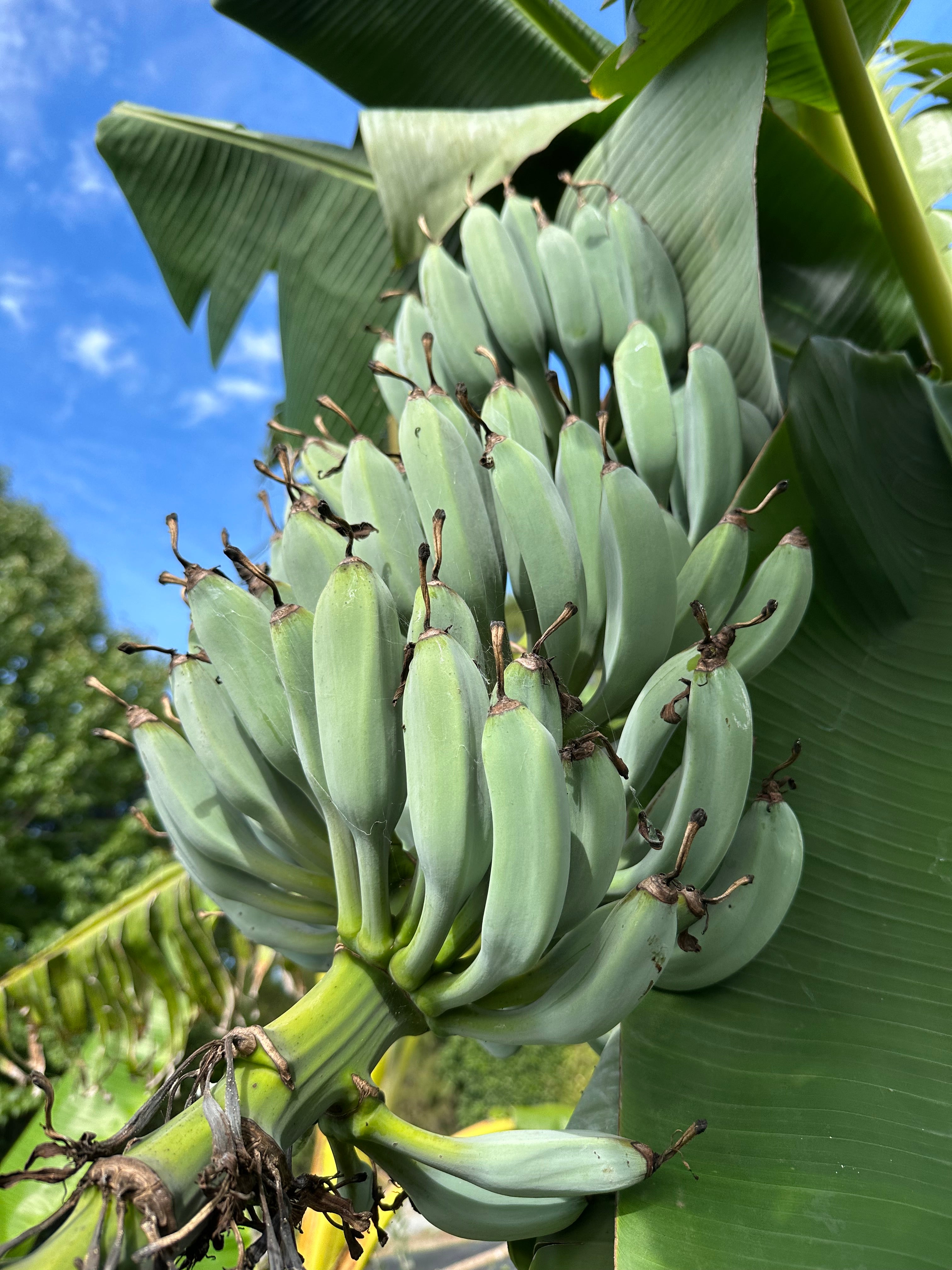Banana - Blue Java (cold-hardy)
- Regular price
-
$89.00 - Regular price
-
- Sale price
-
$89.00
Couldn't load pickup availability
Musa acuminata × balbisiana
The blue java banana, also known as the ice cream banana, vanilla banana, or Hawaiian banana, is a fascinating fruit with unique characteristics: Unlike the typical yellow banana, the unripe blue java has a striking waxy blue peel, resembling a sky-blue crayon. As it ripens, the blue fades to reveal a yellow peel with brown speckles.
The blue java is known for its sweet, creamy flesh with a distinct vanilla-like flavor, often described as reminiscent of ice cream. Its texture is softer and denser compared to regular bananas.
Blue Java bananas are a hybrid of two Southeast Asian banana species, commonly found in regions such as Fiji, the Philippines, and Southeast Asia. Surprisingly, they exhibit tolerance to cold temperatures, withstanding lows as freezing. They are sought after not only for their delicious taste but also as ornamental plants owing to their distinctive blue hue and substantial size.
Banana Plant Care Tips
-
Sunlight: Banana plants thrive in full sun, so it's best to plant them in an area that receives at least 6-8 hours of direct sunlight per day.
-
Soil: Banana plants prefer well-drained soil that is rich in organic matter. A pH range of 5.5-7.0 is ideal for optimal growth.
-
Watering: Banana plants require regular watering, especially during the growing season. Keep the soil moist, but not waterlogged. Overwatering can cause the roots to rot.
-
Fertilizer: Banana plants are heavy feeders and require regular fertilization. Apply a balanced fertilizer every 4-6 weeks during the growing season.
-
Mulching: Mulch around the base of the plant to help retain moisture and suppress weeds.
-
Pruning: Remove any dead or damaged leaves and suckers (smaller offshoots that grow from the base of the plant) regularly. This will help promote healthy growth and prevent disease.
-
Pests and diseases: Banana plants are susceptible to a variety of pests and diseases, so it's important to monitor the plant regularly for any signs of infestation or disease. Common pests include aphids, spider mites, and mealybugs, while common diseases include Panama disease and Sigatoka leaf spot.
-
Harvesting: Bananas are typically harvested when they are fully ripe and the skin is yellow. Cut the bunch off the plant with a sharp knife and allow the fruit to ripen further at room temperature.











